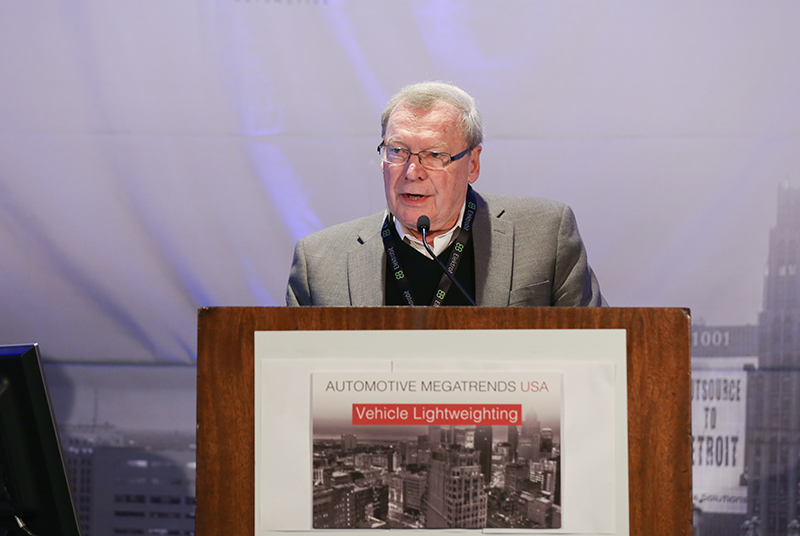The Vehicle Lightweighting track at Automotive Megatrends USA 2015 addressed how suppliers and OEMs can tackle the challenge of reducing vehicle weight, which is spurred by the corporate average fuel economy (CAFE) regulation target of 54.5mpg by 2025.

Speaking at the event, Frank Macher, Chief Executive of Continental Structural Plastics (CSP), a US-based supplier of composite materials, commented that new ways of incorporating carbon fibre into vehicles will help companies realise significant performance improvements, but also reduced costs.
Strong, conductive and 2D
Macher believes that the next round of applications may include solutions such as graphene. Graphene is formed of a single layer of carbon atoms that are bonded together in a repeating pattern of hexagons, and is “one billion times thinner than paper – so thin that it is considered two dimensional,” he commented.
He explained the specific benefits of the material in relation to automotive: “Graphene is considered to be one of the strongest materials ever measured, it is an exceptional thermal conductor, and is one of the most efficient electrical conductors ever known.”
However, as of today no method for mass production of graphene exists, “but once that is figured out, there are great possibilities for sustainable and substantial weight reductions in future,” he commented.
A significant hurdle remains
Speaking directly to Automotive World at the conference, Macher explained that there remains a significant challenge which needs to be overcome in order to bring graphene into the market as a viable option for lightweighting: “We are working with the university of south Dakota, and they have been studying Graphene for some period of time. One of the biggest problems with Graphene is the absolute challenge of producing it in any kind of quantity.”
At current levels of development, Graphene is “clearly still at the university stage,” Macher admitted, but CSP “is trying to see if it can be brought in and introduced as a component with some of our composites in the future. We’re still having a lot of trouble with that, however. It’s a big challenge,” he concluded.
Freddie Holmes



